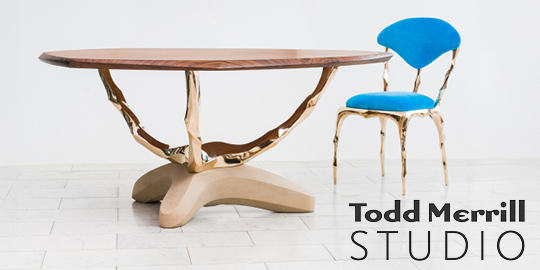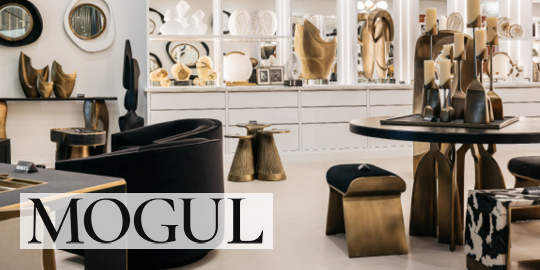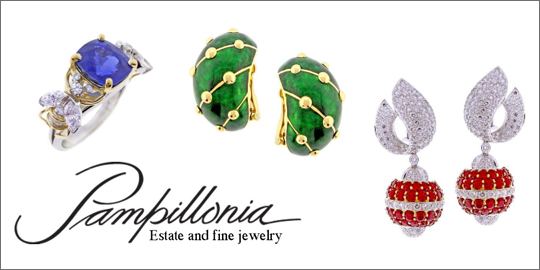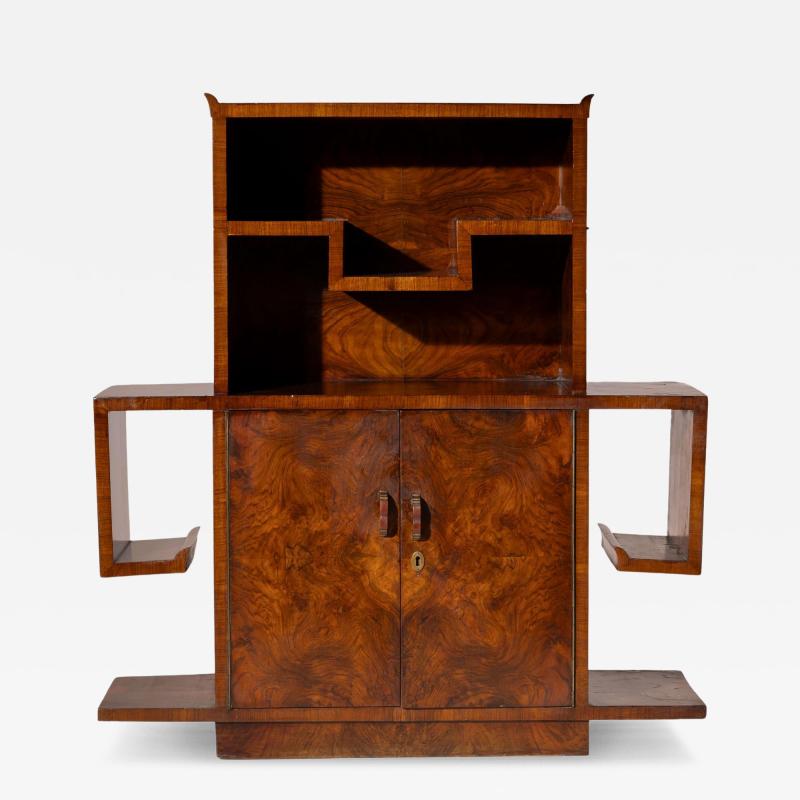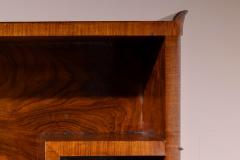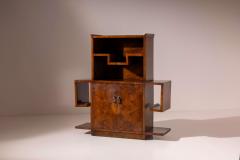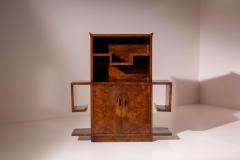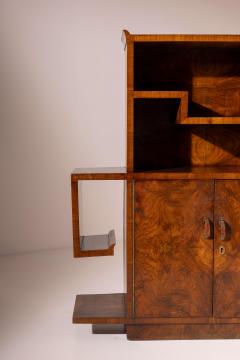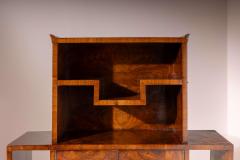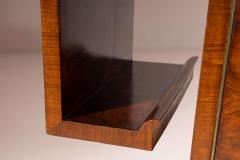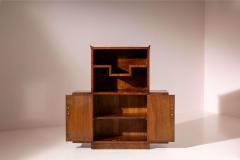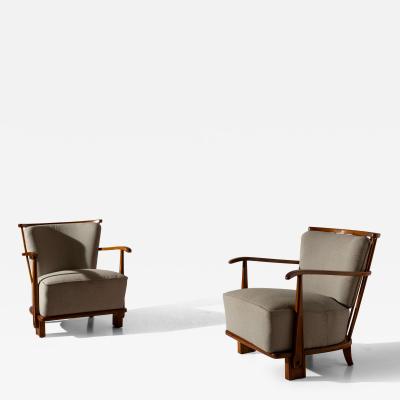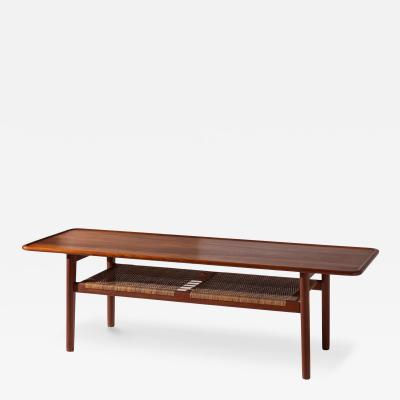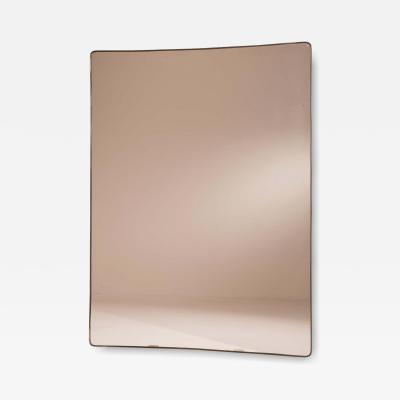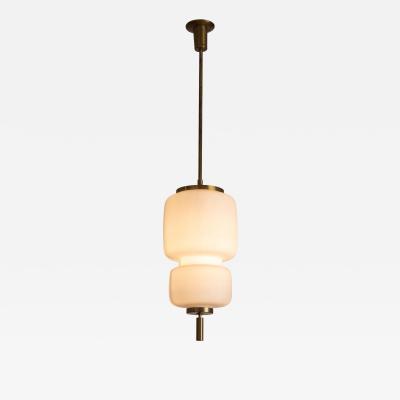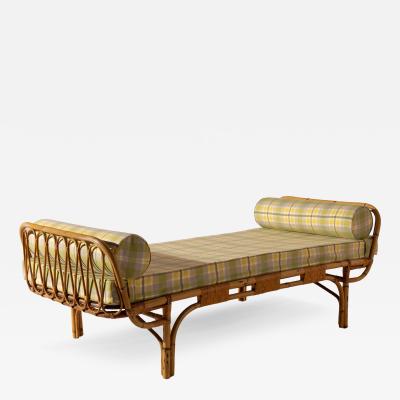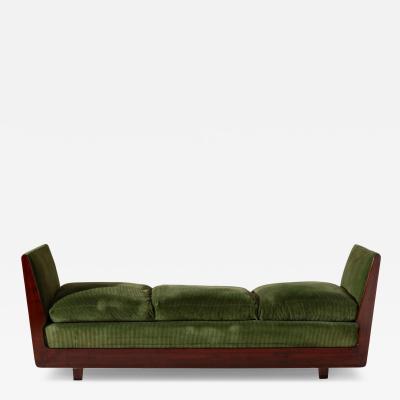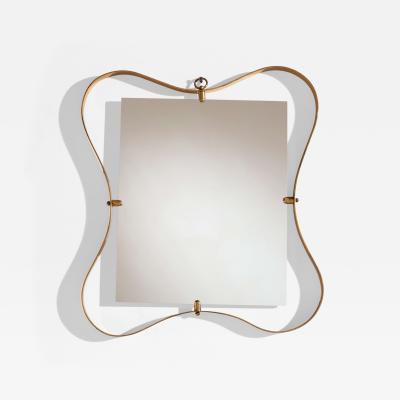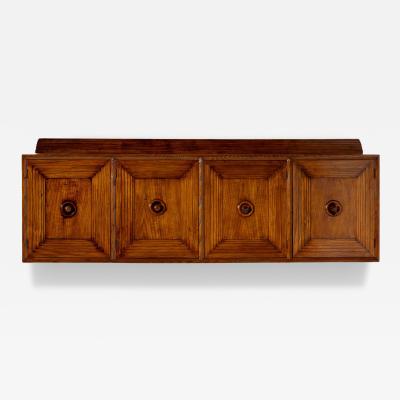A small and delicate display cabinet in walnut and walnut burl, design by Emilio Lancia, Italian production, 1930s
In Emilio Lancia’s furniture production, one can clearly detect references and intentions that closely echo his architectural works. The desire to pare down overtly decorative elements in favor of emphasizing structure—a hallmark of his architectural projects—translates into a subtle poetic sensibility in his furniture design.
This small display cabinet, designed in the 1930s, is a fine example. Crafted in walnut and adorned with beautifully figured walnut burl, it highlights the artisanal quality of the piece. The viewer’s eye is immediately drawn to its sharp, angular lines, which lend the overall structure a surprising sense of lightness.
The cabinet’s form satisfies the demand for visual refinement—a key trait in upper-middle-class interiors—without relying on ornamentation or carved embellishments. One might even recall that these were also the years of Fortunato Depero in Italy. Could this piece not, in some imaginative way, have stepped out of one of his works of aeropittura? The cultural fabric and aesthetic sensibilities of the time were deeply intertwined.
To include such a piece in a contemporary interior, nearly a century after the era and figures it represents, is the mark of a discerning collector—one who recognizes not only its evident aesthetic qualities but also its cultural significance.
Dimensions: 107 cm W x 31.5 cm D x 115 cm H
(42.1” W x 12.4” D x 45.3” H)





